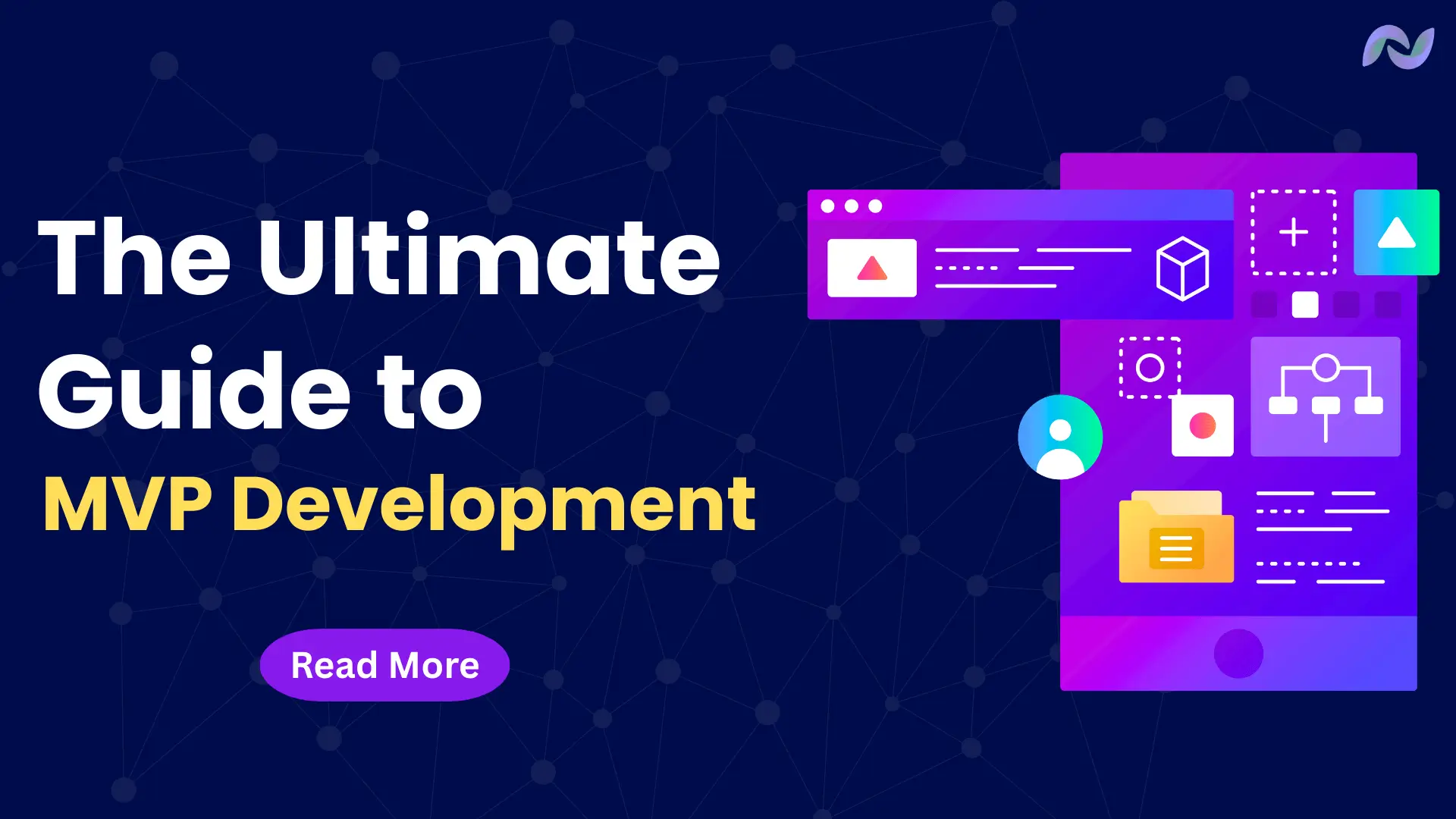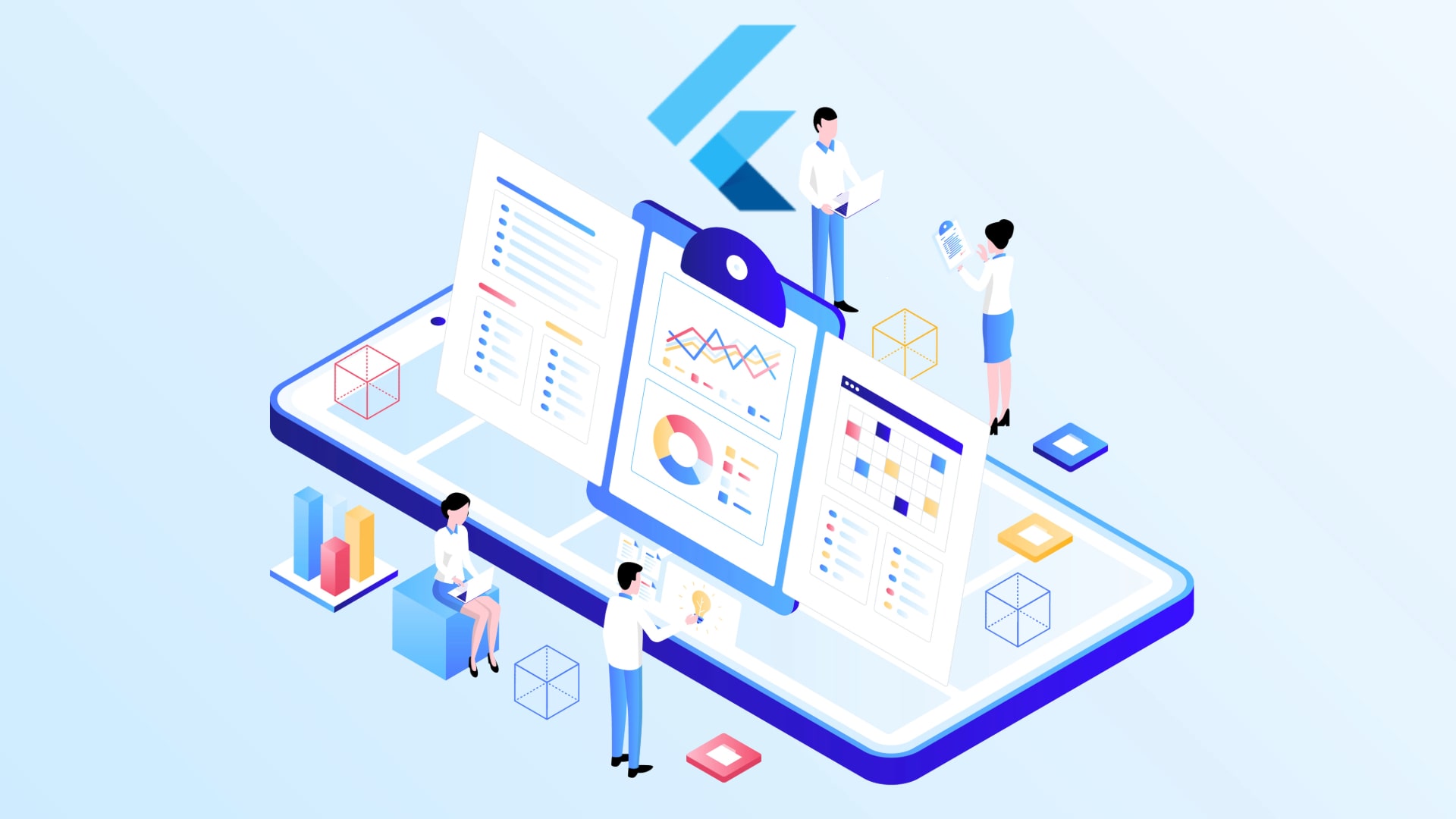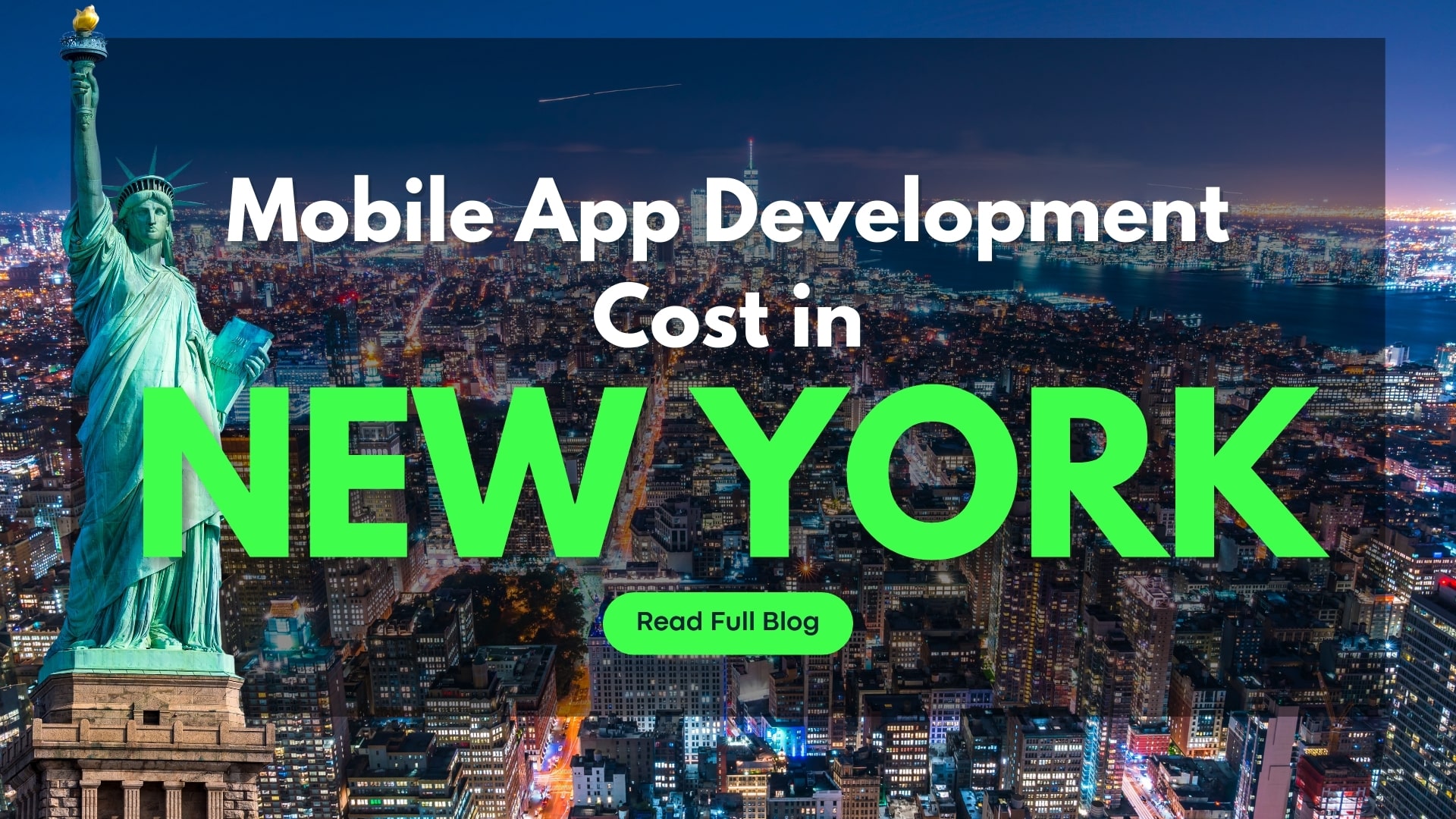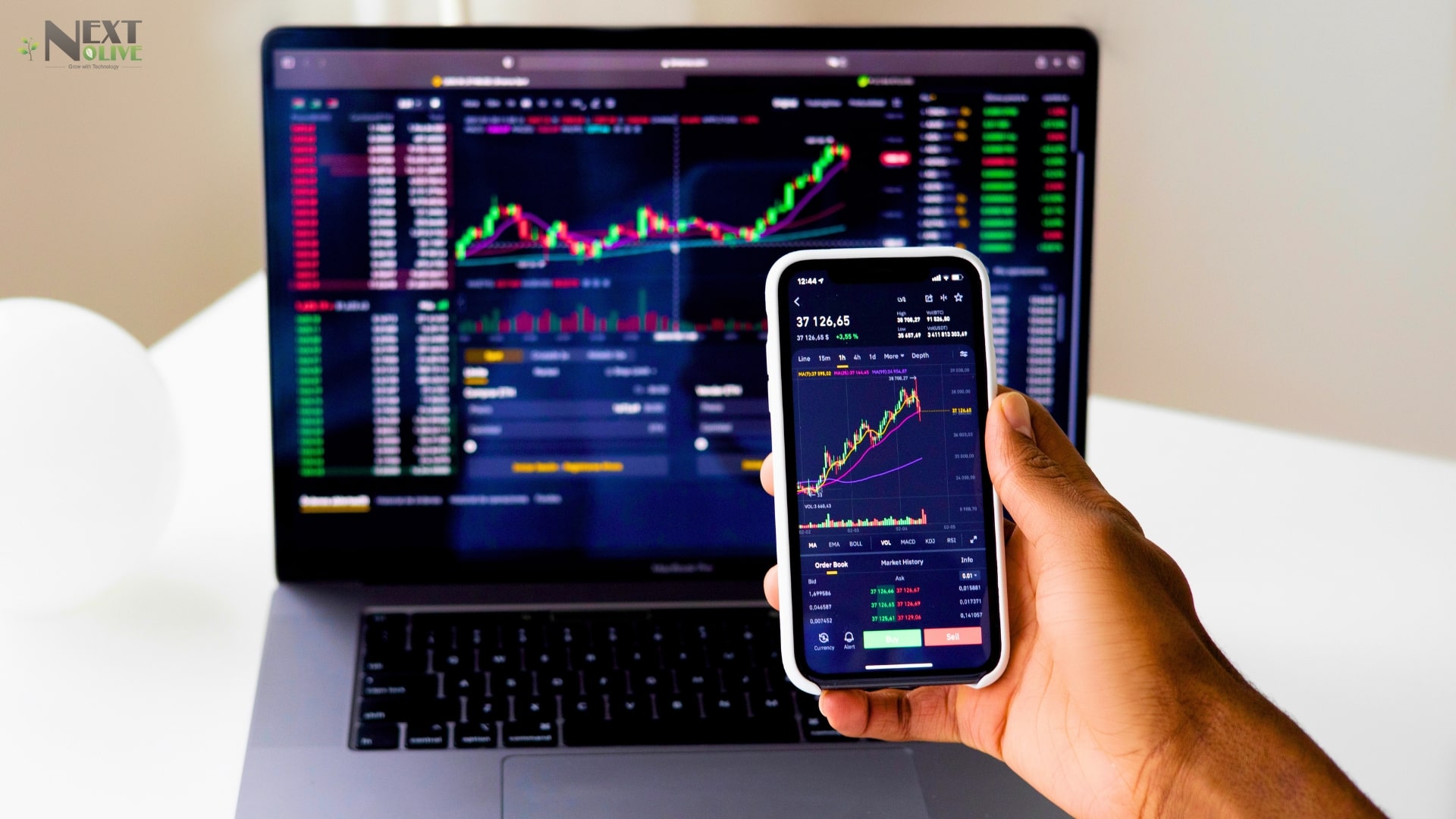How to build a minimum viable product (MVP)?
In modern software and app development, the minimum viable product development plays a crucial role as it serves as a prototype of the application that allows capturing the essence of the product without fully developing it. MVP also enables users to use the app with core features and functionalities, and provide crucial feedback to the developers. The feedback is then used to refine the app to satisfy actual user needs. This comprehensive guide describes the MVP product in detail as well as the whole MVP development process.
Table of Contents
ToggleWhat is MVP Product Development
Before we proceed further in the guide, it is necessary to define a minimum viable product. A Minimum Viable Product or MVP is like a prototype of the application that has the minimum and basic features and functionalities that enable the users to use it and provide feedback, which allows businesses to assess user interest, gather feedback, and make informed decisions regarding future refinements of the application. MVP development lets the developers create a working product with a minimum features without spending time and heavy resources in developing a full-fledged application. It not only saves a lot of time and resources for the company but also creates the possibility of altering and enhancing the application based on user feedback.
Global Market Statistics of MVP Development in 2025
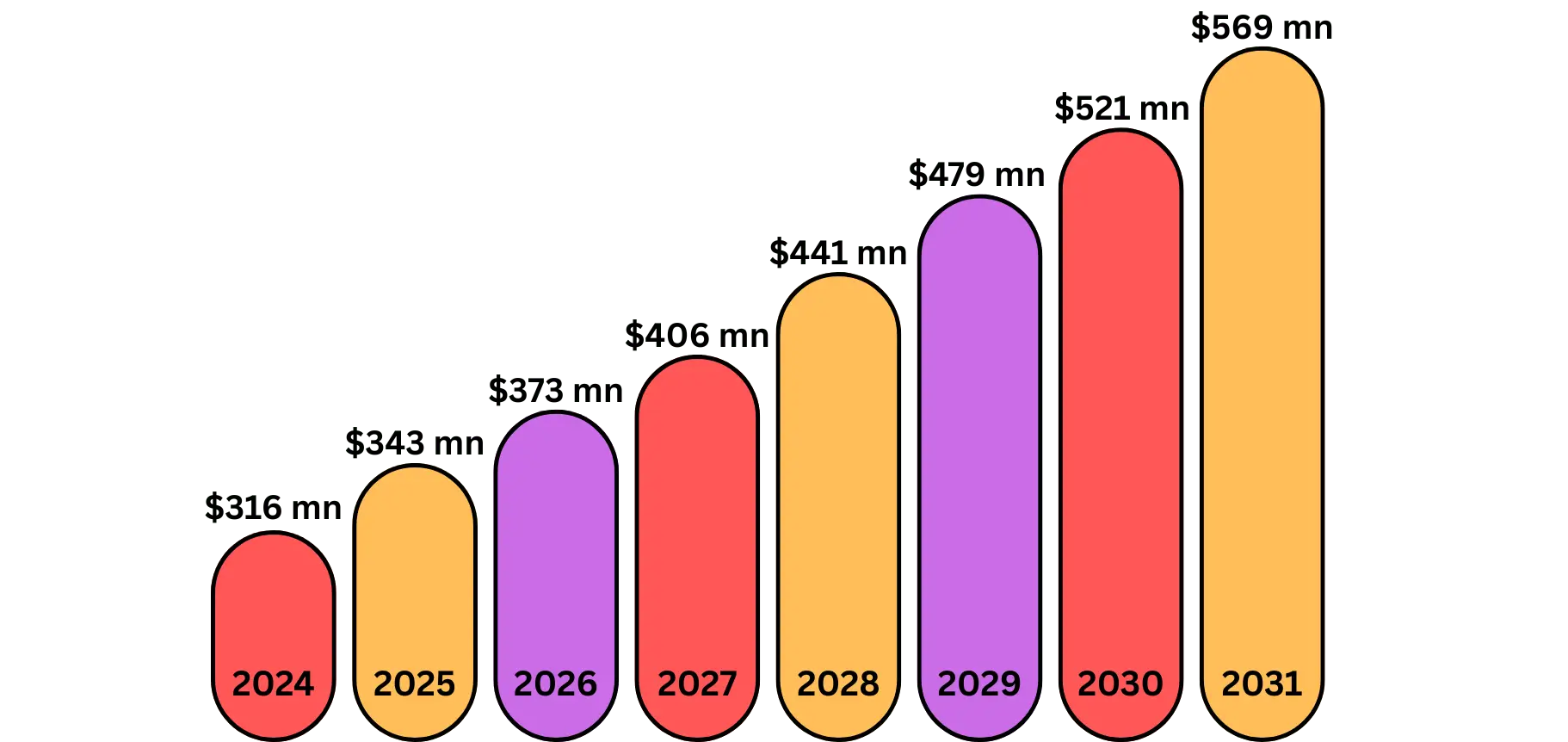
As per the report by Market Research Reports, the global market cap of Minimum Viable Product Development was valued at $316 million in 2024. With a CAGR of 8.7%, it is expected to grow to $569 million by 2031.
Types of MVP
There are generally 10 types of MVPs. Let’s discuss these types in detail.
{1} Landing Page MVP
It is one of the basic types of MVP. It is a simple landing page that helps to introduce the product idea without actually building it through sign-ups or actions such as clicks, email collection, and form submissions. Using these methods, you can get a clear picture of what users truly want in the product. It is a cost-effective way to measure user interest without investing in time and resources for full development of the application in USA.
{2} Explainer Video MVP
Explainer Video MVP is a type of MVP that uses short videos to demonstrate how the app would work and look, as well as what real-world problem it intends to solve. It is generally useful in those situations where the idea is hard and complex to visualize. This approach helps potential users to experience the idea and provide feedback through views, shares, and sign-ups for improvements.
{3} Paper Prototype MVP
As the name suggests, Paper MVP is are hand-drawn sketch of the app idea that illustrates your product’s user interface and flow. This approach encourages brainstorming in app and software projects to test different ideas and layouts, and get user feedback early without any actual development. Due to its low cost and quick iteration feature, it enables the developers to better understand the user needs and act accordingly.
{4} Wizard of Oz MVP
In this type of MVP, the product can be presented to the user as it is fully functional, but in reality, developers control the backend operations manually. This technique is one of the best as it enables you to properly validate user behavior and demand before actual development of the application. It is also It’s ideal for testing complex products where building full automation would be too costly initially.
{5} Concierge MVP
In this MVP, you can offer your product as a personalized and manual service to a small group of users, emulating what the fully automated product would work and look like in the future. Instead of developing the full application, you can guide the users through the experience manually. This method is useful in B2B products, and a hands-on approach helps you deeply understand your customers’ needs and refine your product accordingly.
{6} Single Feature MVP
In Single Feature MVP, you can develop or present a single feature of your product that is eye-catching and outstanding. Using this approach, you can determine the value of your product through a single function. If the user likes that single feature or functionality, you can be sure you are doing well. This approach saves a lot of time and resources while allowing you to enhance and refine the app quickly based on real user feedback.
{7} Piecemeal MVP
In this type of MVP, you can use various existing tools and online services to connect them to simulate your product experience. You can verify and validate a product idea without investing heavily in time and resources. If you are a non-tech founder, you can incorporate this approach to test your product ideas quickly and affordably. You can develop the product only when you know what users want.
{8} Crowdfunding MVP
In Crowdfunding MVP, you can test market demand using platforms such as Kickstarter or Indiegogo, where you showcase your concept and request pre-orders or funding. It’s beneficial in two ways: you can confirm demand while also securing financial support. A successful campaign indicates product-market alignment before production starts. This approach is particularly beneficial for hardware or consumer products that need substantial initial investment.
{9} Interactive Digital Prototype MVP
As the name suggests, this type of MVP focuses on developing a non-functional but interactive prototype using tools such as Figma or Adobe XD. You can develop clickable and interactive user interfaces to emulate how the real application would behave upon being developed. This approach is best for testing user experience, refining design, and enhancing the overall application.
{10} Software MVP
The Software MVP is a prototype of the application that has the minimum features and functionalities. It allows solving the core problem and testing user engagement, and gathering important feedback. It usually takes more time and resources to build, but it is more effective than videos and mockups by providing you with the clearest data and feedback of real-world usage. Releasing early and iterating based on feedback is key here, and this approach serves as a foundation of your fully developed product.
Difference Between an MVP, Prototype, and Proof of Concept
[1] Proof of Concept (PoC)
A PoC is a demonstration of a product or an idea to assess whether the idea is practically feasible or not. The major goal is to prove that the idea is practically possible. In PoC, the main audience is generally the internal teams, stakeholders, engineers, or investors.
[2] Prototype
A prototype is a draft of your application. While it does not fully work in this stage, it still can provide an overall look and functionality of the app when it gets fully developed. The main objective of a prototype is to visualize the design and flow of the app. The main audience is generally designers, developers, stakeholders, and sometimes test users.
[3] Minimum Viable Product (MVP)
An MVP is like a prototype with the bare minimum features and functionalities to get an idea of what the app would look like upon full development and how it would solve real-world problems. The objective of MVP app development is to present the product in front of real users as soon as possible. Early adopters and selected users are generally the main audience.
Advantages of MVP Development
There are several advantages of the MVP Minimum Viable Product development, such as:
[1] Faster Time to Market
One of the biggest advantages of MVP development is that you can integrate core features and launch the app into the market as early as possible. This is advantageous as you can keep up with the current market trends before they change and launch your product in the meantime. This not only saves a lot of time and resources, but can also help you build momentum and create early buzz around your product.
[2] Validates Market Demand
Every product owner fears they might develop and launch a product that does not meet user demands. By leveraging MVP, you can easily test your core product idea with minimal investment. You can observe user behavior and interactions with the application, and decide what to include and what not to, avoiding overspending of time and resources on unnecessary features.
[3] Reduced Development Costs
MVP is all about developing and integrating core features and functionalities rather than spending resources on developing the full application upfront. Incorporate essential features first and present the app to users. Once you get the feedback, start refining the application to meet user demands and step-by-step upgrade the app over time. MVP is beneficial for startups and small businesses with a low budget.
[4] User Feedback and Iteration
User feedback is the most important aspect of app development and software development. MVP development enables a feedback loop between the development team and users during the early development process. You will get suggestions, criticism, and appreciation from users, which is definitely essential for the growth and development of your application until it is fully developed.
[5] Attracts Early Investors
Developing an MVP would allow you to showcase your product or product idea without a heavy investment of time and resources to potential users, and perhaps clients as well. If the MVP is well executed, it will show that you are serious and dedicated to building your product and already solving problems. Investors will likely invest in your idea if they see that it is feasible and capable.
Challenges in Minimum Viable Product Software Development
[1] Defining the Core Problem
One of the major challenges in MVP development is to clearly define the core problems. Many startups and businesses often fail to capture the problem, but rather focus on discussing ideas. The best way to overcome this challenge is by conducting market research, competitor analysis, and analyzing customer reviews. An MVP should deliver immediate value while allowing room for future enhancements.
[2] Selection of Features
Adding too many features to an MVP can overshadow its essential value and delay its release. The focus should be on providing a straightforward yet effective solution that tackles the main pain point. Maintaining a narrow scope aids in streamlining both development and testing, leading to quicker user feedback. Every additional feature should justify its inclusion by either improving usability or fulfilling business goals.
[3] UI/UX Design
An unfavorable user experience can discourage potential customers, regardless of how groundbreaking the product may be. Crafting intuitive navigation and ensuring seamless interactions are essential for retaining users. Utilizing wireframes and prototypes allows for visualization of the user journey before full-scale development. Collecting early feedback on usability and accessibility can help avoid expensive design mistakes. A clean and minimalist design that emphasizes functionality typically performs best for a minimum viable product (MVP).
[4] Assembling the Team
When it comes to assembling a team for developing an MVP product, finding the right experts in product management, development, and design ensures smooth collaboration. Focus on hiring team members who understand agile development and iterative improvements is beneficial in developing a minimum viable product in agile. Leveraging freelancers or outsourcing can help fill gaps when working with a limited budget.
[5] Project Management
Project management is a crucial aspect that should not be ignored. Efficient project management ensures the MVP remains on schedule and within strict time and budget. Establishing project milestones and setting realistic deadlines prevents delays. A lack of proper management can lead to the development of excessive features and functionalities and wasted resources.
[6] Technology Stack Selection
There are multiple options of tech stacks to choose from, and every tech stack can be unique to the project type. By selecting the right tech stack, you can ensure scalability, responsiveness, high performance, and reliability in your MVP. Also consider factors such as security and cross-platform compatibility. Poor technical decisions and tech stack selections may result in rework, affecting development time and expenses.
MVP Software Development Process

Step 1: Identifying the Problem
The journey of developing an MVP software starts with identifying the real-world problems that businesses and users face. First, understand the pain points of users and find all the potential causes of the issue. It is important to find out why existing solutions are not solving the issues. When you understand the problem, you are not only building a product, but you are also developing a product with a purpose in mind.
Step 2: Market Research
When you understand the problems and real pain points of users, it is time to conduct a detailed market research. While conducting market research, ensure to check out your potential competitors to see what they are offering through their product and what is unique that you could offer to users. Analyze user behavior, understand target audience expectations, and validate whether your product is worth developing or not. By conducting all these steps, you can assess the demand for your idea and avoid wasting resources on a product no one needs.
Step 3: Define Core Features
In this stage, you define the core features and functionalities of your MVP product. Ensure that you define only those features that are just necessary and enough to develop and launch the app for usage. It is essential to solve the main problem and deliver value to users first. Keep the product simple, focused, and functional. Once the product is launched, enhancing it would be much faster and less resource-consuming without any issues. Also, create a proper project plan that includes the tech stack, development methodology, project milestones, etc.
Step 4: Development of MVP
Now that the core features are defined and the project plan is made, start developing the MVP as per the plan. Use the latest tech stack while focusing on integrating only core features and functionalities. Prioritize speed and efficiency rather than perfection. Adopt an agile approach and collaborate with stakeholders for fast adjustments in the project. Also, ensure proper communication with the development team to shape the project idea into reality.
Step 5: Launch and Gather Feedback
Once the MVP product is developed, launch it among early adopters who can provide honest feedback. Analyze their behavior and usage patterns, and gather important feedback regarding performance. stability, UI/UX, and anything crucial that could contribute to the success of the product once fully developed. After you get the required information, start improving the application.
Step 6: Iterate and Improve the MVP
The feedback you gathered is like a gold mine with valuable stuff. Analyze the user feedback and cross-check the application to validate it. Focus on fixing the major issues faced by users and prioritize adding missing features and functionalities to the application. Refine the product, fix bugs, and add enhancements while focusing on user needs and expectations.
Benefits of MVP Development for Startups and Businesses
[1] Faster Time to Market
Since an MVP is a scaled-down version of the full app, it takes less time and resources to design and develop. Hence, startups and businesses launch the product in the market early and gather important feedback, and stay ahead of the competitors.
[2] Reduced Development Costs
MVP development focuses on core features and functionalities of the application instead of investing in the full application initially. This approach significantly lowers initial costs, making it ideal for startups with limited budgets.
[3] Early User Feedback
Once the MVP is developed and launched in the market, users can start using it and provide important feedback. This data helps in understanding user behavior, validating ideas, and making informed decisions for future development.
[4] Low Risk of Failure
Since MVPs are developed with proper planning and considering user demands, their chances of failure in the market are reduced. Developers focus only on providing what the users want, and this is one of the major factors of an app’s success.
[5] Investor Confidence
Once your MVP product is launched in the market and starts to gain popularity, it will build confidence in the investor that the product will succeed. He will invest more in the product to boost the startup’s development of it and create the application with full features.
MVP Development Cost
[1] Features and Complexity
Features and complexity of the MVP app affect the cost of development app to an extent. If the app has basic features, it would be less complex to develop and require fewer time and resources as well. But if the MVP application has complex features such as a payment gateway, etc, it would be complex and would need more time and resources to develop, thus affecting the overall cost to develop.
[2] Third-Party Integrations
Third-party integrations enhance the application by adding additional features and functionalities without developing them from scratch. External APIs such as payment gateways, messaging, and navigation require licensing fees, and the number and complexity of APIs would affect the development costs.
[3] Development Team Size and Location
The team size would depend on the complexity and size of the project itself. A small team would be perfect for a small and medium-sized project. The team would charge less but could take more time in developing the application. Whereas, a large team is ideal for a complex project, but it will cost more, and the development time would depend on the size of the project.
[4] UI/UX Design
A simple UI/UX with basic and simple animations would require less time to design and develop. It would cost even less when using pre-built assets. But if the app has complex UI/UX with custom animations, icons, and themes, it would require more time and resources to develop, and the cost of the whole application would increase.
[5] Technology Stack Selection
Selecting the tech stack also affects the overall development cost. Some technologies require expert professionals to integrate into the app, which also requires additional costs. Choosing a tech stack that aligns with your team’s expertise and long-term goals can help optimize costs.
- Basic MVP: $7,000 to $25,000.
- Medium-Complexity MVP: $25,000 to $60,000.
- High-Complexity MVP: $60,000 to $150,000 or more.
How to Select an MVP Development Company?
Nowadays, many MVP development companies offer MVP development services to startups and large businesses. But the real challenge is to select the right one for your product idea. There are several important characteristics to look for in a company. The company should incorporate end-to-end and transparent communication with the clients. The firm should develop clear project milestones and focus on developing a product that users want. Also, it should provide the best solution within the time and budget of the client. One such company is Next Olive, which has over 13 years of experience in minimum viable product software development in various industrial sectors. The company has over 100 MVP developers ready to turn your ideas into reality. Connect with Next Olive for your next MVP project.
Conclusion
In this guide, we uncovered the details to build MVP product from scratch. To build a minimum viable product, you need to first identify the core problems and create a comprehensive plan for it. Then start developing it according to the plan. You can also incorporate agile development MVP to make the development process more flexible. Many startups and businesses are leveraging MVP in development to launch the application with core features and later enhance it based on user feedback. Lastly, you can hire an MVP software development agency to speed up the development process with more efficiency.
Frequently asked questions (FAQs)
Some of the leading MVP development firms are:
- Next Olive Technologies
- Sciencesoft
- Radixweb
- Uptech
- SpaceOTechnologies
The full form of MVP is Minimum Viable Product. It is a stripped-down version of the full application that contains core features and functionalities to launch it early in the market.
The time required to develop an MVP depends upon several factors such as size, type, and complexity of the application. A basic app would take around 1 to 3 months, a medium complexity app would take 3 to 6 months, and if the app is highly complex, it would take up to 8 months to develop with core features and functionalities.
Next Olive is the leading MVP app development firm with over a decade of experience in providing MVP app development services, including custom MVP software development, SaaS MVP development, and MVP web development in over 20 different countries such as the USA, UK, Australia, Saudi Arabia, UAE, Malaysia, etc.

